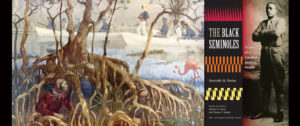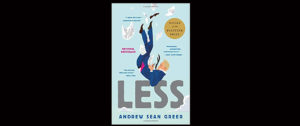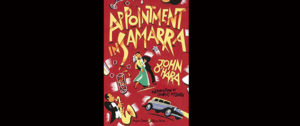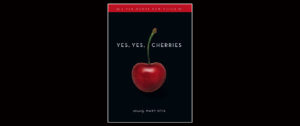Four Stars–From Each According to Her Ability.
The worlds that provide the settings for one of sci-fi maestra Ursula K. Le Guin’s best known novels, The Dispossessed, are Anarres—the smaller of the two, a barren desert devoid of nonhuman fauna and almost all flora but rich in valuable natural resources—and Urras, an paradise resplendent with lush flora and diverse fauna but lacking the resources it acquires from the Anarresti populating Anarres. Published in 1974, The Dispossessed earns its entry into the sci-fi genre by virtue of its settings. Anarres and Urras are presumably a planet and its satellite, though it’s ambiguous as to which is which or if these worlds are a binary-planetary system: two planets orbiting each other. Although The Dispossessed is enriched with evocative descriptions, Le Guin doesn’t bother to provide a description of the solar system Anarres and Urras inhabit: a surprising oversite for a sci-fi novel of its stature.
The Dispossessed also earns sci-fi stripes by virtue of its philosophical considerations of time that elegantly structure the fiber of the novel, but are feeble–scientifically at best. Further the novel stumbles in its discussion of spacetime.

Ursula K. Le Guin was one of America’s most popular and prolific writers, publishing nineteen novels in her lifetime. Another was published posthumously. In 1974 The Dispossessed won the Nebula Award for best science fiction or fantasy novel of the year and that year also won the Hugo Award for Best Novel of the year. The Hugo Award is the best-known and most-prestigious award reserved exclusively for the science-fiction and fantasy genres. Le Guin won the Hugo Award for Best Novel of the Year on one earlier occasion: 1970 for The Left Hand of Darkness. Her 1972 novel, The Lathe of Heaven, was a Hugo award finalist. These accolades place her in the company of indisputably great sci-fi and other speculative fiction writers such as Alfred Bester, Robert A. Heinlein, Isaac Asimov, Kurt Vonnegut, Philip K. Dick, Frank Herbert, Arthur C. Clarke, George R. R. Martin, L. Ron Hubbard, Robert Jordan, Neal Stephenson, and J. K. Rowling.
Thus I undertook this review with great deference for Le Guin oeuvre and with respect even though I highlight this novel’s profound weaknesses: lapses in strong persuasive writing, glaring inconsistencies, uninteresting conjectures about time and simultaneity—but an excellent use of time in the novel’s structure—and surprising misstatements of astrophysics. Despite its sci-fi bona fides or lack thereof, as a work of speculative sociological and political fiction, The Dispossessed excels.
The Dispossessed is written in a close-third-person narration. The point-of-view character is Shevek—a resident of Anarres, a brilliant, idealistic, young theoretical physicist. Shevek’s story is told in chapters that alternate between the odd-numbered chapters in which he travels to Urras without assurance he’ll be able to return home to Anarres, to his wife and children. On Anarres he has been a teacher of mathematics and physics.
Even-numbered chapters begin when Shevek was a schoolboy, proceed chronologically, and culminate when he attempts to return to Anarres from Urras. Thus the novel has a Nietzschean eternal-return structure, circling at the end to the place where it began, the even numbered paragraphs catching up to the odd numbered paragraphs, thus in essence the sequences of events intersecting at a singular place and space in time: a polytemporal palindromic chiastic figuration superbly done. Le Guin elegantly addresses this structure within the novel in her discussion of the circle versus the arrow of time. (223—page numbers refer to the Kindle version; print copy page numbers may vary slightly.)
Anarres was uninhabited until it was populated by Urrasti immigrant adherents to the philosophy of Odo 170 years before the novel begins. But descriptions of Odonian origins are as vivid and vibrant as if those ancient events occurred the day before the novel’s present action. The values and teachings of Odo are inextricably engrained in the consciousness of the Anarresti with no dissent therefrom among the characters the reader meets. Readers will recognize Odo as a communist (she rejected private ownership of property), a label not adopted by the Anarresti, and an anarchist, a sobriquet they embrace.
Shevek has formulated a Unified Field Theory of Simultaneity and Sequency. This would require profound contemplation if it meant that Shevek posited that distinct events could be sequenced simultaneously at a point where the four geometrical axes of four-dimensional space intersect. That would mean stopping time at a singular point in spacetime where simultaneous events are or can be sequenced. There is not in The Dispossessed, an explanation of Shevek’s Unified Field Theory except for Shevek’s belief that if the power of his theory were unleashed, it could be used to exceed the speed of light enabling those masters of the theory to conquer the universe, an ambition Shevek comes to believe the Urrastis possess.
Shevek could not get his initial theories published without allowing his nemesis supervisor to take almost all of the credit and he cannot get his theory of Simultaneity and Sequency published at all because permission is withheld by the PDC (Production and Distribution Coordination). And this is because Sabul, will not permit it.
Thus Shevek travels to Urras to see if his work can be published there. Once there, however, he changes his mind about wanting publication fearing the Urrasti will use it for military purposes in campaigns of conquest. Herein resides an important inconsistency of the novel. On Anarres Shavek’s theory is set forth in a manuscript that cannot be published because of Sabul’s obstruction. But when he’s on Urras, Shevek’s theory is only in his mind, it’s not been reduced to writing.
In terms of the writing, there are some literary flourishes, but in large part the writing is pedestrian at best and in many instances it is worse. Nevertheless, The Dispossessed does deserve praise for the diverse and significant topics woven into the narrative—feminism, coming of age, human gender relations including homosexuality, families, and a rich story that examines the social consequences of a capitalism on Urras and communism on Anarres.
The deft treatment of this wide range of complex topics is remarkable as they are woven into the novel in a non-judgmental comparison of three distinct systems of government. The people of Anarres portend anarchy, conformity, and communism (a rejection of private ownership of property). The people of A-Io, a civilization on Urras, are governed in a class-structured-capitalist system, and the people of Thu, also on Urras, who compete with A-Io, are governed in a totalitarian-socialist system.
Despite inconsistencies, lapses in the quality of the prose, and profound errors in the science, the novel does excel in the genre of speculative sociological fiction. And it’s a fine bildungsroman.
My critique of the writing is exemplified below without mention of grammatical errors that are self-evident:
“He (Shevek) was sitting on the arm of a chair, and Vea was curled up on the hassock at his knees, erect and supple, her soft breasts staring at him with their blind eyes, her face smiling, complacent, flush.” (228)
According to Urrasti custom Vea’s breasts are bare. But breasts—soft, supple, or otherwise cannot anatomically be erect. Vea’s nipples could be erect, but Le Guin doesn’t say that they are. But assume Vea’s breasts were erect. Then bow how could they be supple? Are Vea’s breasts really staring at Shevek whether they see him or not? Is it credible that he believes or feels as if her breasts are staring at him? Famously, men do stare at women’s breasts. But do they stare back? “Soft and supple” is redundant and when referring to a woman’s breasts it is cliché. Notwithstanding, to write that breasts stare with blind eyes is not writing well even with allowance for poetic license.
Another endeavor to describe the erotic:
“The first time they both came as Shevek came into her, the second time they struggled and cried out loud in a rage of joy, prolonging their climax as if delaying the moment of death.” (322) C’mon. This is dime-store paperback-romance writing, not vivid realistic eroticism.
Moving beyond eroticism:
“His gentleness was uncompromising; because he would not compete for dominance, he was indomitable.” (116) Cute but ridiculous.
“The straight shining rails ran under the wheels. Clouds in the west laid great shivering mirages on the plain, the shadows of dreams of lakes gone dry ten million years ago.” (311–312)
Of course, rails don’t run under wheels nor do they appear to do so. Clouds do not lay mirages on the ground. We could, again, forgive this prose in the name of poetic license. More aptly, however, its preposterous inaccuracy renders the passage inelegant.
But to give Le Guin deserved due, there is good writing, some of which is in the guise of bad writing. For example, in a conversation with his lover/wife, Takver, Shevek, says, “The way to see how beautiful life is, is from the vantage point of death.” (190). This is banal and demonstrably false, giving the impression that Shevek is a blowhard trying too hard to be profound. When a person is enraptured listening to a piano concerto composed by Beethoven, for example, does she have to compare that experience of beauty to death to appreciate the music?
But while Shevek is trite here in what he says, the writing is excellent in the manner it captures the frame of mind of a sophomoric alpha male: he exults in expressions he thinks are profound. Still having achieved this interesting, arresting character development, Le Guin then ruins it. Not wanting the reader to miss the point that Shevek is philosophizing, in response to his life-is-beautiful-compared-to-death declaration Takver responds, “Ah! Your talk, your damned philosophy.” Classic editorializing that cheapens the prose: Le Guin not trusting her readers to understand.
Turning to the issue of science, consider this passage (41-42).
“‘I never thought before,’ said Tirin unruffled, ‘of the fact that there are people sitting on a hill, up there, on Urras, looking at Anarres, at us, and saying, “Look, there’s the Moon.” Our earth is their Moon; our Moon is their earth.
‘“Where then is Truth?’ declaimed Bedap, and yawned.
‘“In the hill one happens to be sitting on,’ said Tirin.”
As there is no reference to our solar system, why should either Urras or Anarres be Earth and the other the moon in the alien solar system of Urras and Anarres? In other places in the novel, Le Guin refers to our planet, earth, as terra (sometimes capitalized, sometimes not). And why is “Moon” capitalized and not “earth?” The use of this nomenclature, earth and Moon, is careless and distracting.
There is Le Guin’s dreadful decision to rename Einstein. He becomes Ainsetain. Early in the novel, on Urras Oiie asks Shevek if he’s “seen the work on relativity theory by an alien physicist, Ainsetain of Terra”? (70). Shevek had not and another character, Pae, runs off to fetch him a translated copy. Does this translated work of Ainsetain refer to general or special relativity? Or both? The novel doesn’t say but the context suggests Le Guin meant to refer to general relativity. Translated from what language? The novel doesn’t say. Einstein’s theory of general relativity is set forth in his field equations. Must numbers, Greek letters, and mathematical symbols be translated?
Later (279) Le Guin writes:
“ . . . Ainsetain, too, had been after a unifying field theory. Having explained the forces of gravity as a function of the geometry of spacetime, he had sought to extend the synthesis to include electromagnetic forces. He had not succeeded.”
Einstein understood well the relationships between general relativity and electromagnetism. Le Guin’s failure to inform herself of rudimentary theoretical physics is bewildering in light of her telling the stories in the novel through the eyes of a theoretical physicist. Einstein’s quest for a unified field theory had nothing to do with electromagnetism. Spacetime is not a synthesis (a combination of two or more things). Water in liquid, gas (steam) or solid (ice) depending on the temperature is a synthesis of hydrogen and oxygen. Spacetime is one thing, a gravitational field not distinguishing between space and time.
General relativity explains or predicts how large objects—planets, stars, galaxies, black holes—behave and interact. This is something that classical Newtonian physics cannot do. Quantum mechanics explains how subatomic particles will behave and interact. At the subatomic level, general relativity breaks down. Interacting subatomic particles do not behave as general relativity would predict. Conversely, quantum mechanics cannot explain the nuances of the behavior of large interstellar objects. Can general relativity and quantum mechanics be married in a way that makes these incompatible laws of physics understandable?
In the final decades of his life, it was Einstein’s quest to discover a fiery marriage of general relativity and quantum mechanics. If it could, the equations would express his unified field theory or the theory of everything as he called it. No one has been able yet to posit equations that combine general relativity with quantum mechanics. It would be an awesome premise of a sci-fi novel to imagine that Einstein’s final quest was realized. But this is something Shevek does or tries to do. One must wonder how Le Guin’s peers could overlook her grave errors of science when they declared The Dispossessed to be the best science fiction novel of 1974.
Shevek’s unified field theory marries Simultaneity and Sequency. Is it a neat trick to sequence events at a singularity of spacetime? A single moment and place in spacetime? What Altro, the senior Urrasti theoretical physicist, refers to as Shevek’s General temporal theory?
Not really. A chemical or nuclear reaction (or any moment during a chemical or nuclear reaction) is just that: the simultaneous culmination of a sequence of events. Combustion could occur in a single moment and place and combustion is the result of the sequence of events that precede it. The same is true of nuclear fusion. The same is true of the moment of impact or collision of two objects.
In some places in The Dispossessed, Shevek believes and says that he’s succeeded in combining his theories of Simultaneity and Sequency (70) but that he hasn’t written it down, even though back on Anarres Sabul has read the theory and ostensibly deemed it unworthy of publication. [Most readers of Sci-Fi can see reasons beyond petty or even professional jealousy. There is noting profound about numerically expressing the result of simultaneous reactions, which necessarily had to be the culmination of sequences of events].
But whether he has a combined theory of simultaneity or not, he fears that his work will be expropriated for military purposes by the government of A-Io and fears that credit for his discovery will be appropriated—shades of Sabul, jealously abounds in a multitude of social systems—by Pae, who is a senior scientist on Anarres. In later portions of the novel, Shevek thinks that he has not discovered how to unify Simultaneity and Sequency. There is no explanation in The Dispossessed of Shevek’s change of mind about this critical accomplishment or the fact of it.
Le Guin spells Einstein “Ainsetain” in an attempt to create a sense that The Dispossessed takes place in a universe remote in time and distance from our own. This is an unnecessary affectation.
The Dispossessed bears witness to an obsession with scatology. Not in a positive or neutral sense, the children of Anarres are taught to think of their counterparts on Urras as excrement, a word that’s used in the novel in more than a dozen places and senses. In one scene a toilet is referred to as a shitstool. In another the entire bathroom is a shitstool. Such tropes are simply vulgar; They’re not transformative.
In The Dispossessed the reader will be treated to vivid descriptions of place and social systems and structures. The environment on Anarres is arid. Droughts sometimes last for years; water is rationed; famines are not uncommon. In many regions of the planet, dust chokes the inhabitants. There is no fauna other than humans and very little flora. The most predominant plant is holum: It is relatively tasteless and the substance from which bread is made.
In contrast, Urras is vividly verdant, blessed with an abundance of splendid plants and animals. There are several nations on Urras, the principal one being A-Io. A-Io has a thriving capitalist economy with the social class strata that is an essential element of capitalism. Of A-Io, a character informs: “The government here is not despotic. The rich are very rich indeed, but the poor are not so very poor. They are neither enslaved nor starving.”
The people of Anarres refer to the Urrastis as either belonging to the propertied class or the unpropertied class. On Anarres, to be called propertied is to be insulted. The understanding on Anarres of class status on Urras turns out essentially to be correct but as Shevek comes to learn, the social strata on Urras is more nuanced, more complex as there is a middle class on Urras, at least in A-Io.
170 years before the events that take place in the novel, Anarres was settled by dissident citizens of Urras, followers of the teachings of the philosopher Odo. The settlers, who call themselves Odonians, live in a communist anarchist society: There is no money, no private property. There are no laws and, as the Odonians would claim, no government. Those who can produce do so out of their Odonian convictions. This appears to be universal on Anarres, we see no dissenters.
The behavior of the citizens of Anarres is controlled by peer pressure, punishment by work postings to places where severe weather creates horrendous hardships, such at locations that foster perpetual dust coughs.
This raises the question about the above conversation between Tirin and Bedap. Why is “Truth” capitalized? Is The Dispossessed a novel about a quest for truth? A discovery of truth? Hardly. In fact, Tirin says as much: truth is in the eye and mind of the beholder. If The Dispossessed were a novel about a search for or discovery of Truth, then the explorers would never leave port. This is to Le Guin’s credit. No judgment is made as to whether the society of A-Io or of Anarres is superior to the other. In fact, the novel explicitly reveals a lack of humanity in both systems.
The Dispossessed makes a feint toward feminism. Female citizens of A-Io shave their heads, wear clothing that doesn’t cover their breasts: rather their clothes are designed to accentuate bosoms. Women don’t hold public office: classic social oppression. But the women believe, it seems, that they control society by controlling their husbands. This is as far as any theme or motif of anti-feminism is developed. Nonetheless, it’s almost as if Phillis Schafly adopted these pages when she wrote Feminist Fantasies or The Flip Side of Feminism.
As in 1984, in The Dispossessed there are wars between the different nations on Urras. These wars are fought by the poor and are necessary to maintain the status quo: to suppress the ruled or property-less class (or classes). As in The Fountainhead, exceptionalism is suppressed in A-Io and on Anarres, though for different reasons. In A-Io it is to enable the propertied class to expropriate the discoveries of others for economic enrichment, especially as doing so can produce military advancement. This is the reason the Urrastis want Shevek’s unified field theory discovery. On Anarres, it is to appropriate the discoveries of others (Shevek’s in this case) and thereby garner credit for themselves.
Perhaps the most disappointing aspect of The Dispossessed is Le Guin’s resort to a deus ex machina ending.
So what is The Dispossessed, a novel enshrined in the canon of science fiction literature, about? The Dispossessed is less science fiction and more social commentary like The Grapes of Wrath or The Jungle, but it is not a polemic to its credit. In The Dispossessed the science fiction is extraneous to its message. More is accomplished and more eloquently expressed in Animal Farm, which accomplishes its social criticism in a setting here on earth. What the novel is about is best understood when Urras and Anarres are seen as a convenience to the story, a contrivance that serves as Le Guin’s vehicle to compare a propertied-class society with a society that is anarchistic and self-declared free of class and caste.
How to rate such a novel on a scale of one to five stars. It’s an achievement, flawed as it is, beyond the capability of most writers to achieve. But flawed it is. I deem it worthy of 3.5 stars and have rounded up.










































Excellent review, and a thoroughly refreshing assessment of an iconic work of science fiction, culminating in Jordan’s analogy of The Dispossessed to a salt-of-the Earth novel of social realism like The Grapes of Wrath, rather than the extraterrestrial, interplanetary (and ambiguous) utopia touted in Le Guin’s title. Jordan’s brief, deep dive in Einstein’s “fiery marriage” of general relativity and quantum mechanics was especially illuminating. A delicious complement to a classic work!
It’s an interesting review and shows a great deal of work on your part. Much appreciated.
I agree with your basic assessment of the book. There are some worthwhile parts in the book, but it is ultimately not successful. What I found interesting in your review was your attempt to show her bad writing. I also thought her writing bad, but for different reasons.
There was something “flat” about her prose, at least to me, which caused me to find the book slow sledding. I don’t mind a breast description (who would), but there was, for lack of a better word, an absence of animation in the characters. Nobody really seemed excited. It seemed like the narration was from a distance and I didn’t feel the emotions of the characters. These are pretty vague phrases, but it’s what sticks with me. For example, you take the Big Sleep. People are agitated, sarcastic, oversexed, fearful, lots of emotions on display. Her characters just didn’t feel engaged.
And I just didn’t find either society believable. As I mentioned in the book group, Anarres seemed like some weird medieval society, updated with modern technology, and Urras’ notion of people doing anything without coercion or laws doesn’t match any of my views of human nature. And the idea that the two societies were so fundamentally different after 170 years was stupid. Maybe 1000 years, but 170 years is a very short time in terms of human behavior. So, just not credible.
Keep the reviews coming. They are great fun to read.